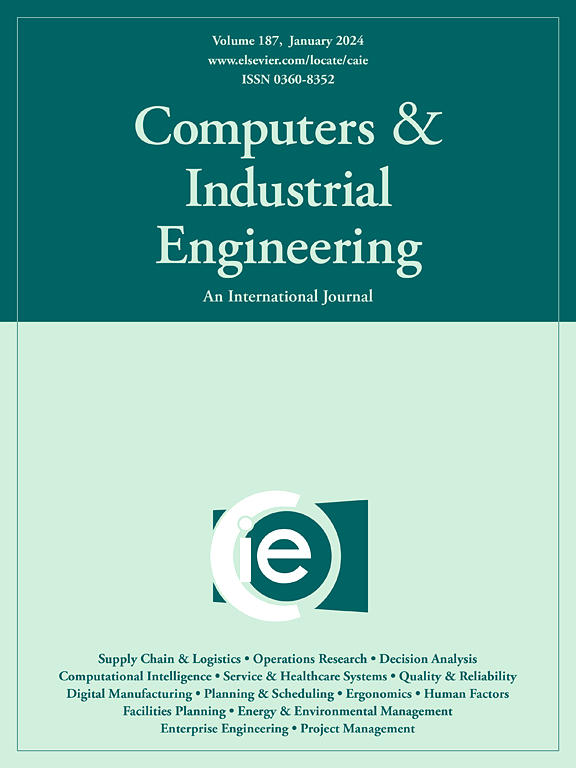Line balancing for energy efficiency in production: A qualitative and quantitative literature analysis
IF 6.7
1区 工程技术
Q1 COMPUTER SCIENCE, INTERDISCIPLINARY APPLICATIONS
引用次数: 0
Abstract
In the rapidly evolving landscape of hyperconnected digital manufacturing, known as Industry 4.0, achieving energy efficiency has become a critical priority. As manufacturers worldwide strive to meet sustainable development goals, enhancing energy efficiency is essential for reducing operational costs and minimizing environmental impact. In this context, line balancing is a pivotal strategy for optimizing energy consumption within manufacturing processes. This study presents a comprehensive literature review on the Line Balancing Problems (LBPs) focused on enhancing energy efficiency. The review aims to provide a holistic understanding of this domain by examining past, present, and future trends. A systematic literature review is conducted using the PRISMA method, incorporating both qualitative and quantitative analyses. The quantitative analysis identifies prevalent patterns and emerging trends in energy efficiency optimization within the LBP domain. Concurrently, the qualitative analysis explores various aspects of existing studies, including configurations of lines, managerial considerations, objectives, solution methodologies, and real-world applications. This review synthesizes current knowledge and highlights potential avenues for future research, underlining the importance of energy efficiency in driving sustainable practices in Industry 4.0 and the emerging Industry 5.0 paradigm.
生产线平衡的能源效率在生产:定性和定量的文献分析
在快速发展的超连接数字制造领域,即工业4.0,实现能源效率已成为一个关键的优先事项。随着全球制造商努力实现可持续发展目标,提高能源效率对于降低运营成本和最大限度地减少对环境的影响至关重要。在这种情况下,生产线平衡是优化制造过程中能源消耗的关键策略。本文对以提高能源效率为重点的线路平衡问题(lbp)进行了综述。这篇综述旨在通过考察过去、现在和未来的趋势,提供对这一领域的全面理解。使用PRISMA方法进行了系统的文献综述,包括定性和定量分析。定量分析确定了LBP领域能源效率优化的流行模式和新兴趋势。同时,定性分析探讨了现有研究的各个方面,包括线的配置、管理考虑、目标、解决方案方法和现实世界的应用。这篇综述综合了当前的知识,并强调了未来研究的潜在途径,强调了能源效率在推动工业4.0和新兴工业5.0范式的可持续实践中的重要性。
本文章由计算机程序翻译,如有差异,请以英文原文为准。
求助全文
约1分钟内获得全文
求助全文
来源期刊

Computers & Industrial Engineering
工程技术-工程:工业
CiteScore
12.70
自引率
12.70%
发文量
794
审稿时长
10.6 months
期刊介绍:
Computers & Industrial Engineering (CAIE) is dedicated to researchers, educators, and practitioners in industrial engineering and related fields. Pioneering the integration of computers in research, education, and practice, industrial engineering has evolved to make computers and electronic communication integral to its domain. CAIE publishes original contributions focusing on the development of novel computerized methodologies to address industrial engineering problems. It also highlights the applications of these methodologies to issues within the broader industrial engineering and associated communities. The journal actively encourages submissions that push the boundaries of fundamental theories and concepts in industrial engineering techniques.
 求助内容:
求助内容: 应助结果提醒方式:
应助结果提醒方式:


